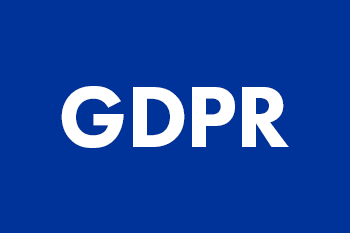Why Are Insurance Companies Shifting to Automated Systems?
The landscape of the insurance industry is evolving rapidly with the advent of technology, and one of the most significant changes is the shift toward automated systems. But why is this happening? What’s pushing insurance companies to leave behind traditional methods and embrace the world of automation? In this article, we’ll discuss the reasons behind this digital transformation and explore how it’s reshaping the insurance sector.
1. Enhancing Efficiency and Accuracy
At the heart of this shift is the need for efficiency and a better customer experience. Insurers are adopting insurance policy management software in droves, and it’s not hard to see why. This type of software not only streamlines administrative tasks but also allows for seamless policy management, which is a game-changer for both providers and policyholders.
Time is money, and in the insurance business, accuracy is just as valuable. Automated systems provide the perfect blend of speed and precision, eliminating tedious manual processes and reducing human errors. This means faster underwriting, claims processing, and response times, leading to a more efficient operation overall.
2. Cost Reduction
Automation offers insurance companies a powerful means of cutting operational costs. By streamlining and automating routine tasks, such as data entry, claims processing, and policy administration, companies can minimize the need for manual labor. This reduction in human intervention not only lowers labor costs but also decreases the likelihood of errors, thus saving both time and money in the long run.
3. Enhanced Customer Service
Automated systems enable insurance companies to deliver prompt, accurate, and consistent service to their customers. Whether it’s processing claims, answering inquiries, or providing policy information, automated tools can handle customer interactions efficiently and effectively. By offering round-the-clock assistance and quick resolution of issues, insurance companies can significantly improve customer satisfaction levels and foster long-term loyalty.
PA companies are leveraging automation not just to improve their internal workflows but also to provide value-added services to their clients. From personalized insurance plans to real-time claims adjustments, the benefits for both insurers and consumers are clear and compelling.
4. Competitive Advantage
In today’s digital age, staying competitive requires embracing innovation and leveraging advanced technologies. Insurance companies that invest in automation gain a competitive edge by enhancing their operational efficiency, agility, and responsiveness. By setting the benchmark for innovation in the industry, these companies can attract more customers, retain existing ones, and outperform their competitors.
5. Data-driven Insights
Automation enables insurance companies to harness the power of big data for actionable insights. Automated systems can analyze vast amounts of data, including customer demographics, behavior patterns, and risk factors, to identify trends, anticipate market shifts, and personalize offerings. By leveraging data analytics, insurers can make more informed decisions, optimize pricing strategies, and mitigate risks effectively.
6. Scalability
As insurance companies expand their operations and customer base, they encounter the challenge of managing growing volumes of data and workload. Automation provides a scalable solution that can adapt to changing business needs and accommodate increasing demands seamlessly. Whether it’s handling a surge in policy applications or processing a higher volume of claims, automated systems can scale up or down as required, ensuring uninterrupted operations and maintaining service quality.
7. Customization and Personalization
One of the more striking benefits of automation for insurance carriers is the ability to offer tailored experiences. Here are a few ways customization plays out with automated systems:
-
Dynamic Pricing: Using algorithms to assess individual risk factors, carriers can offer personalized pricing to their customers.
-
Policy Adjustments: Clients can adjust their coverage with ease, ensuring that their insurance matches their current needs.
-
Targeted Communication: Automation allows for more effective communication by using customer data to send relevant information and offers.
8. Regulatory Compliance Simplified
Navigating the complex web of regulations and compliance standards can be daunting. Automated systems excel at staying on top of regulatory changes, ensuring that insurance carriers remain compliant with minimal effort.
9. Real-time Risk Assessment
Thanks to AI, insurers can evaluate risks in real-time, providing more accurate quotes and preventing fraud. This translates to a safer, more reliable insurance landscape for everyone involved.
10. Streamlined Billing Process
Beyond managing policies and assessing risks, an insurance billing solution is a cornerstone of modern insurance operations, bringing simplicity and compliance into the financial aspect of insurance transactions.
Automated billing software reduces paperwork, accelerates payment cycles, and provides transparency for customers. The result is a more user-friendly and effective financial management system within the insurance sector.
11. Enhanced Financial Reporting
Insurance billing software enriches both the insurer’s and the policyholder’s experience. It ensures that payment processing is accurate, accounts are up-to-date, and financial records are meticulously maintained.
With automated systems, generating detailed financial reports becomes a breeze. Insurers can monitor their financial health more diligently and make informed decisions based on hard data.
Final Thoughts
The transition to automated systems is a testament to the insurance industry’s resilience and dedication to innovation. It allows companies to operate with more accuracy, efficiency, and flexibility while providing customers with the exemplary service they expect and deserve. Though challenges exist, the potential rewards make the journey toward automation not just desirable but essential.



